 |
 |
 |
| |
Aging with HIV
|
| |
| |
Giovanni Guaraldi, MD
Reported by Jules Levin
EACS Nov 2019, Basel
Download the PDF here
Download the PDF here
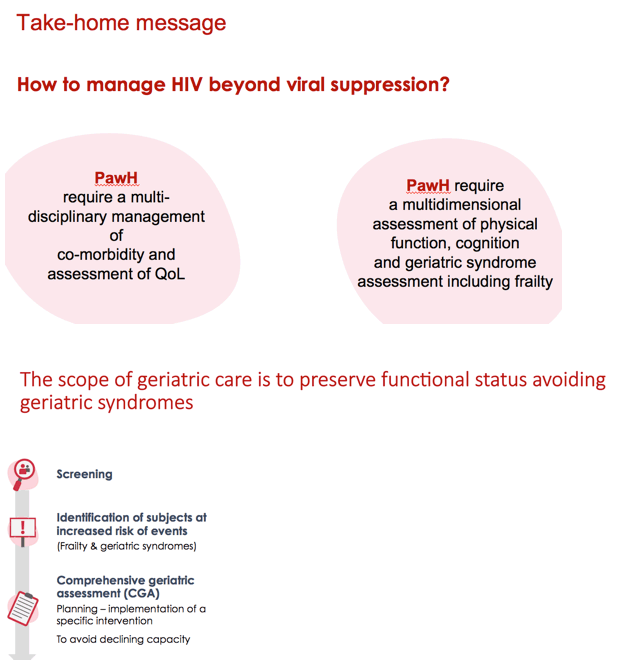
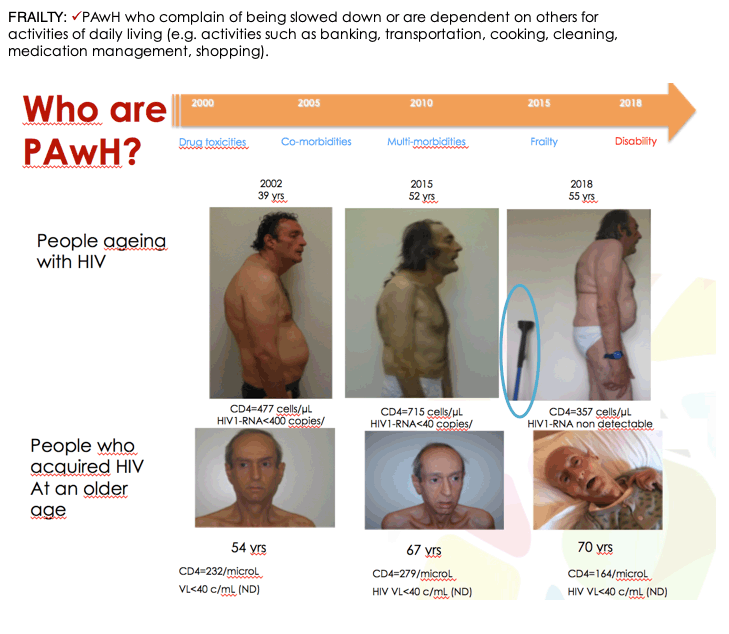

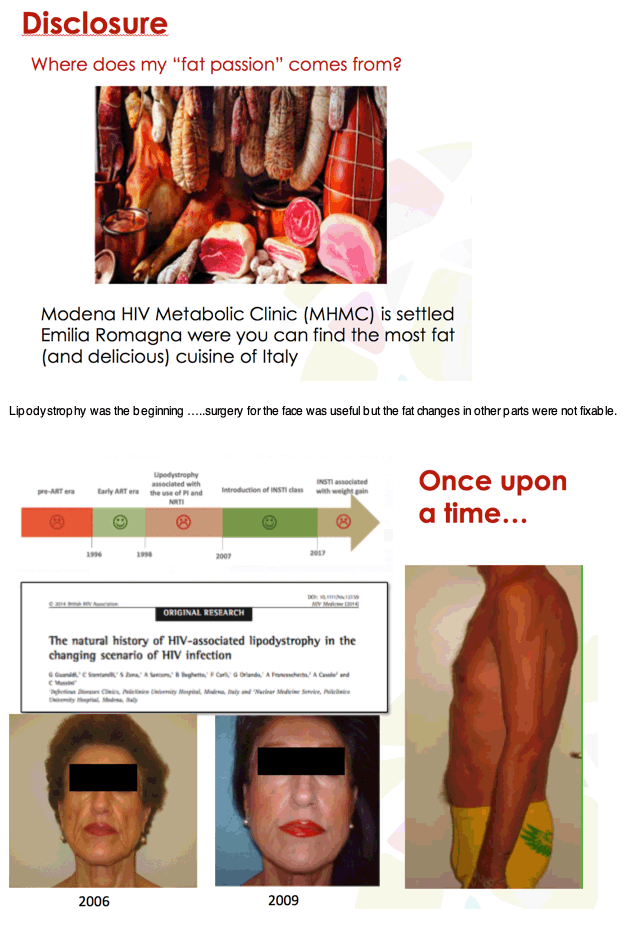
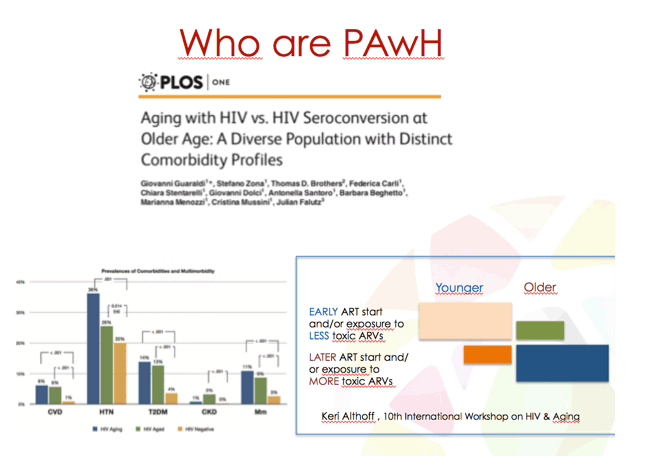
There is a thought held by some researchers that earlier ART may reduce comorbidities risks, but I maintain earlier ART will not reduce the risk that much & what about PLWH who do NOT start early as is the case despite Guidelines' recommendations to start immediately & the CDC reports only 50% have viral suppression, its 73% in WIHS. This as yet to be studied as far as I know: comparing these 2 groups. Particularly with the recent association with weight gain & integrase & its affects on CVD, diabetes, and fatty liver this raises more concern than was thought prior to this recent discovery. Jules
We performed a case-control study including antiretroviral therapy (ART)-experienced patients who were HIV seropositive for 20.6 years ("HIV-Aging"), or who were seropositive for < 11.3 years ("HIV-Aged") having access in 2013 at the Modena HIV Metabolic Clinic. Patients were matched in a 1:3 ratio with controls from the CINECA ARNO database. MM was defined as the concurrent presence of >2 NICM. Logistic regression models were constructed to evaluate associated predictors of NICM and MM.
We analysed 404 HIV-Aging and 404 HIV-Aged participants in comparison to 2424 controls. The mean age was 46.7±6.2 years, 28.9% were women. Prevalence of HIV co-morbidities
and MM were significantly higher in the HIV-positive groups compared to the general population (p<0.001) and a trend towards higher rates of MM was found in aging vs aged group. This difference turned to be significant in patients above the age of 45 years old (p<0.001).
In multivariable models including age, gender, and nadir CD4 count, we observed 5-fold increased odds ofMM in HIV-Aging participants compared to HIV-negative individuals (OR = 5.0, 95% CI,3.3-7.6, p<0.01), and 4-fold increased odds of MMin HIV-Aged participants compared to HIV-negative (OR = 3.8, 95% CI,2.5-6.0, p<0.01) (Fig 3).
In the subset of HIV patients over-45 years old, including 502 individuals, prevalence of MMin HIV-Aged vs. HIV-Aging was 42% and 58%, (p = 0.181). In multivariable logistic regression we documented a statistically significant increased risk of MMin HIV-Aging compared to HIV-Aged patients (OR 1.92, 95% C.I. 1.03-3.56, p = 0.039) after adjustment for gender (OR 3.46, 95% C.I. 1.19-10.04, p = 0.023), age (per 1 yr increase OR 1.08, 95% C.I. 1.02-1.14, p = 0.004), lipodystrophy, and cumulative exposure to ARVs (Fig 4).
CONCLUSION: People aging with HIV display heterogeneous health conditions. Host factors and duration of HIV infection are associated with increased risk of MM compared to the general population.
Pdf publication attached
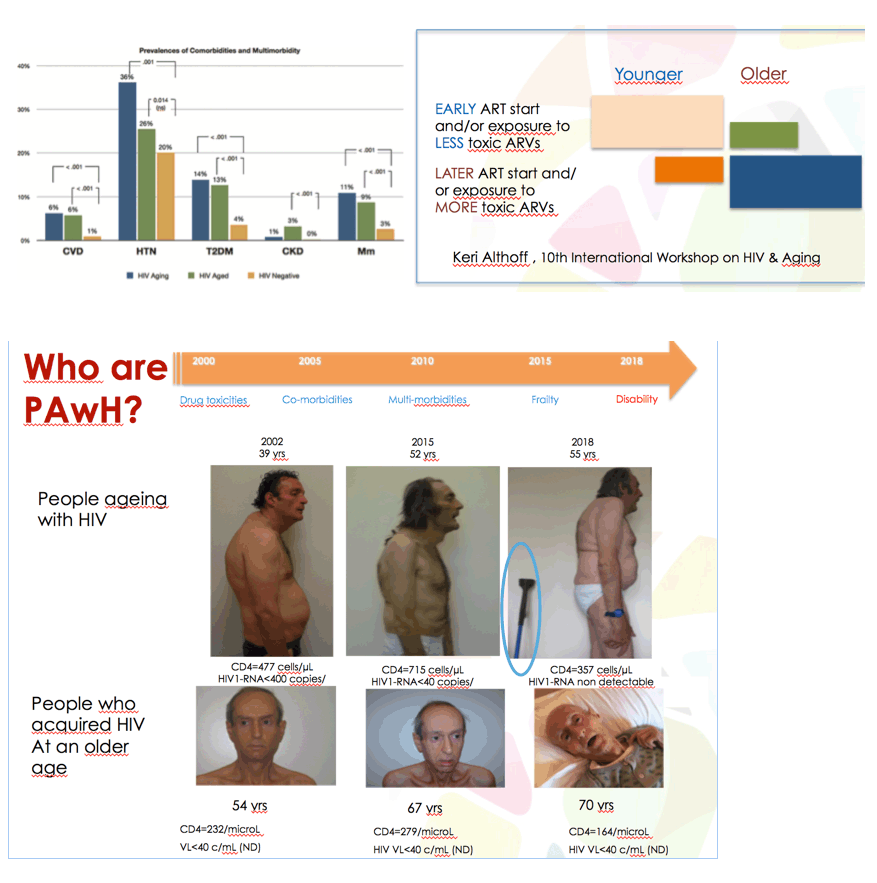
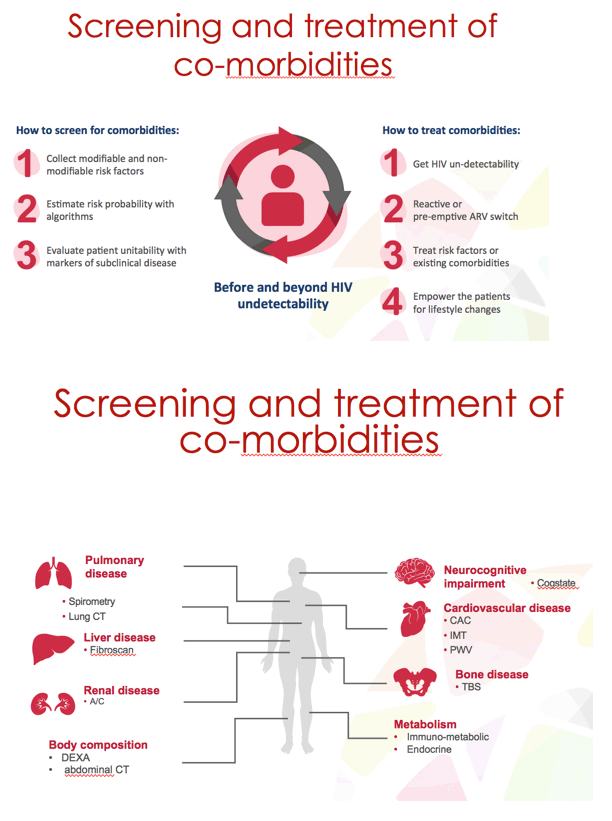
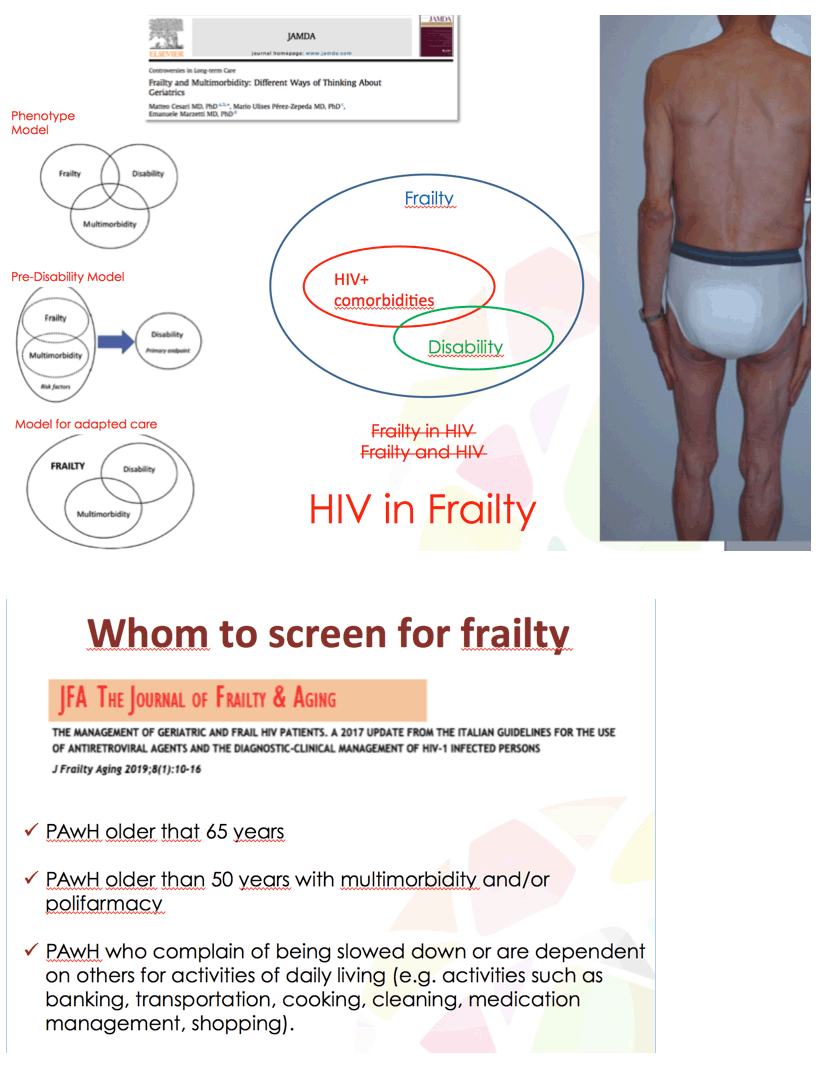
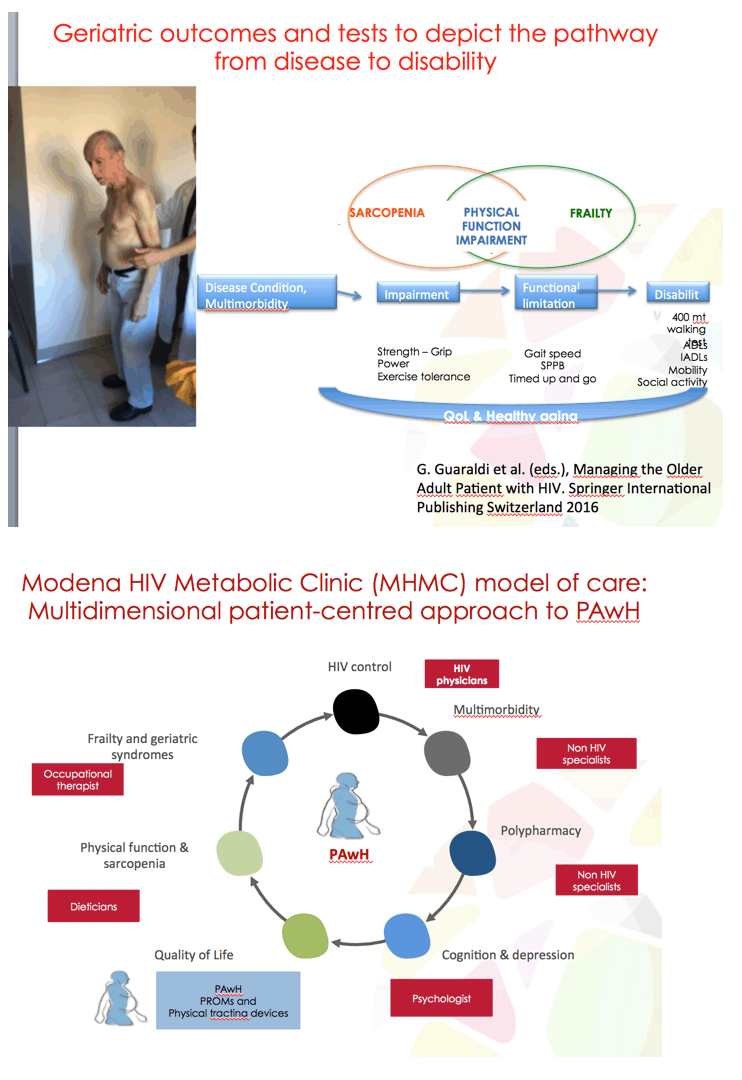
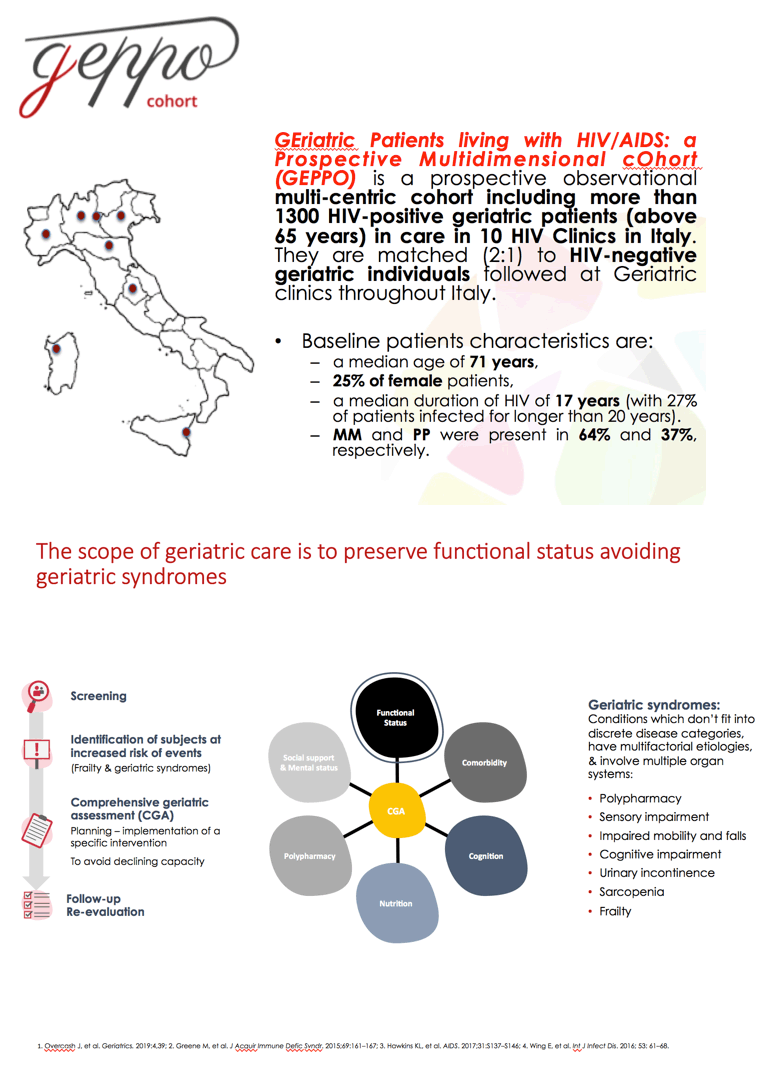
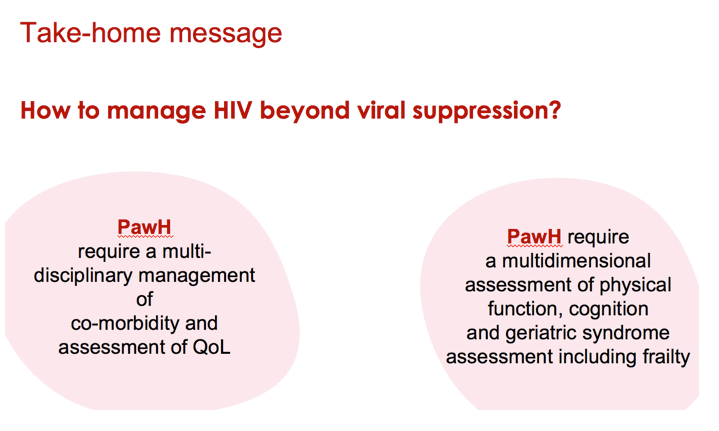
|
| |
|
 |
 |
|
|